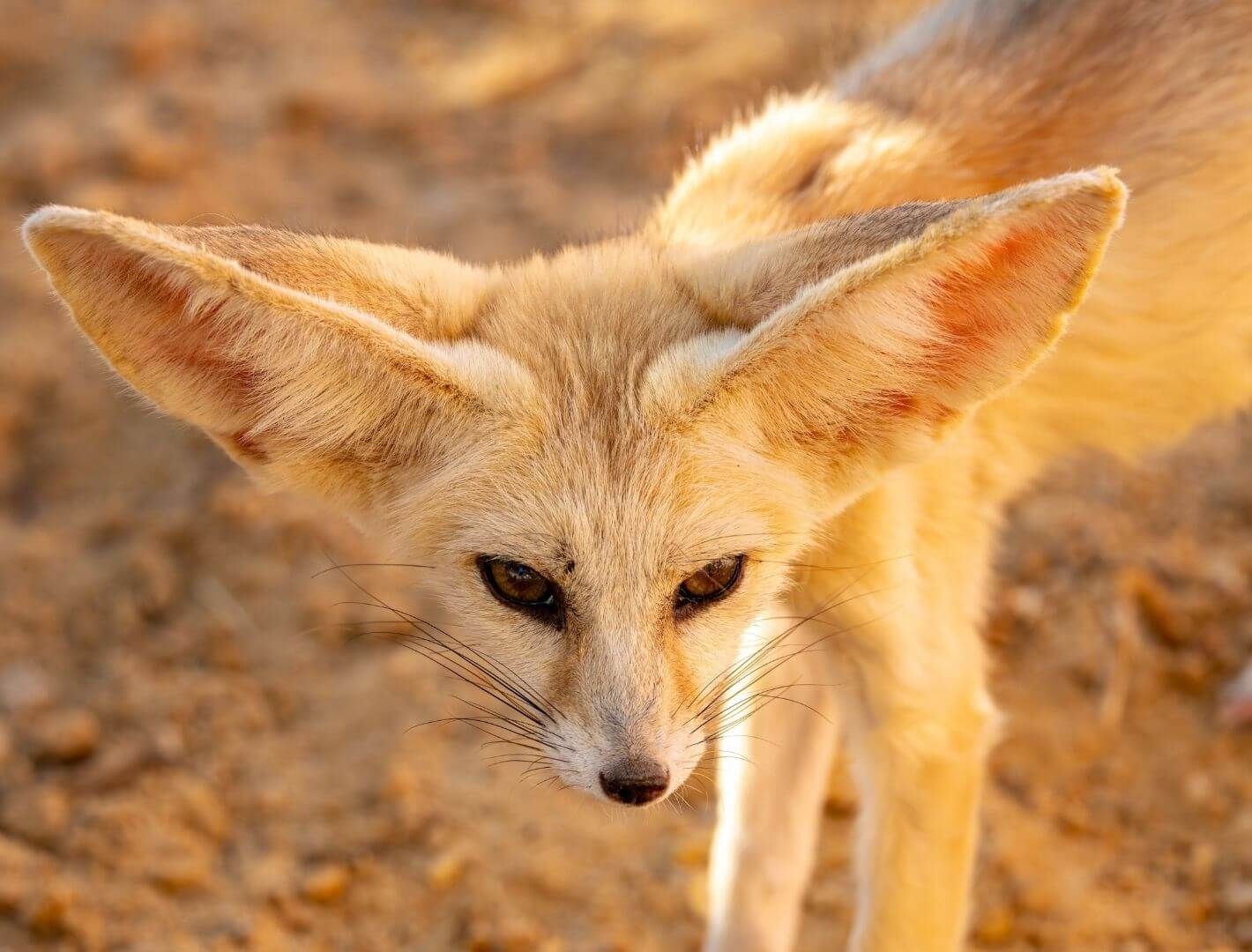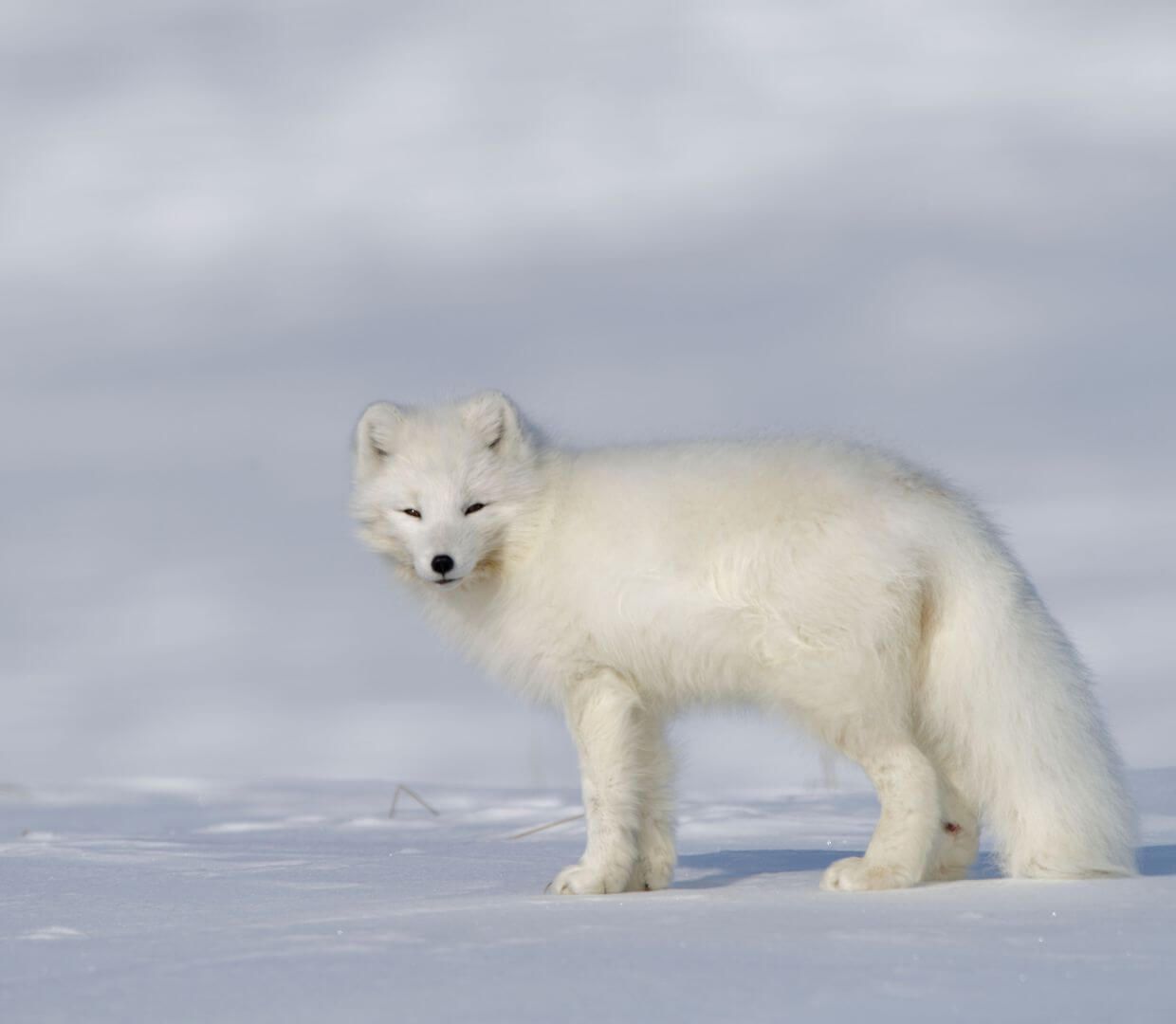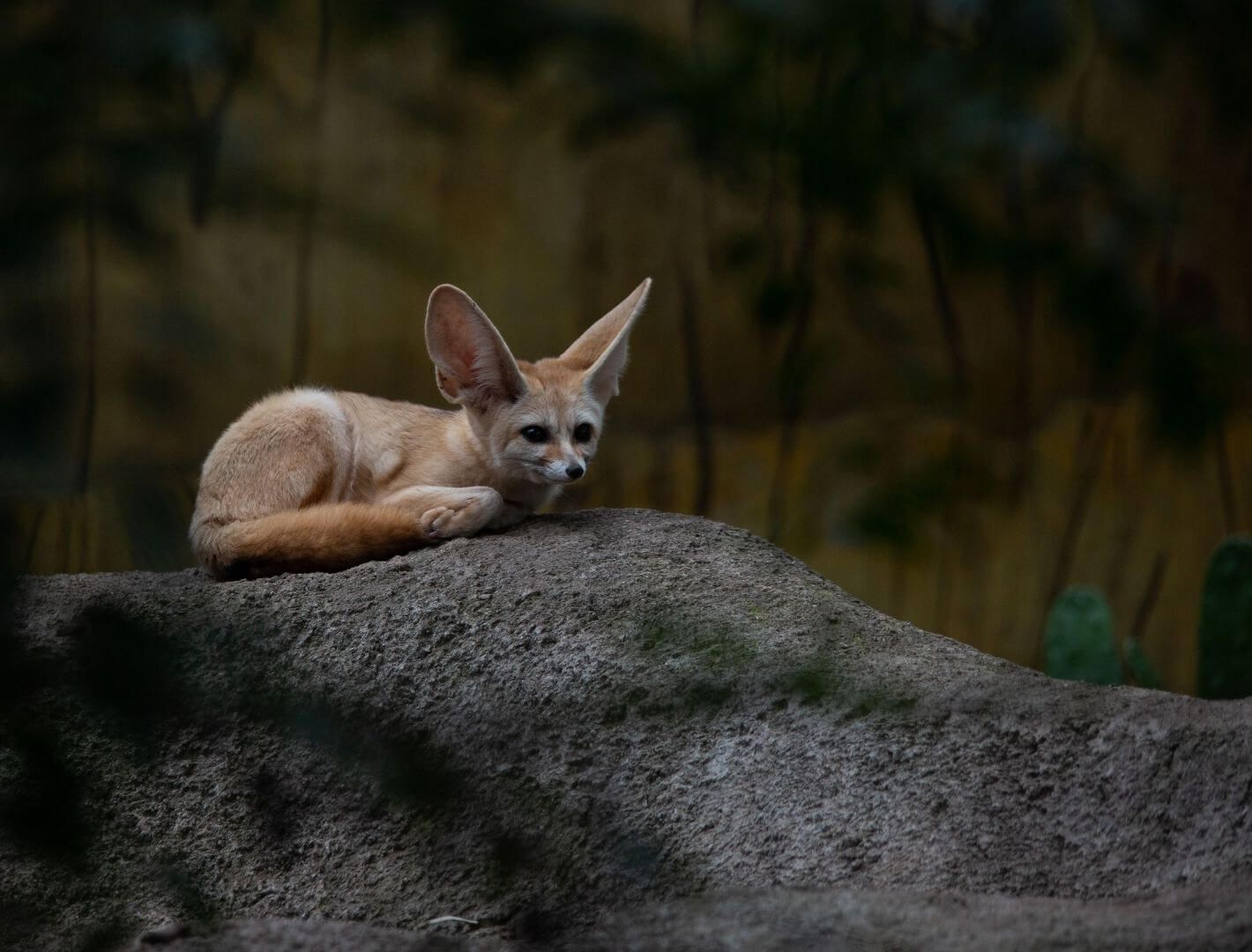Fennec Foxes

Let's Learn About Fennec Foxes
Word of the Week
Nocturnal
Nocturnal animals are most active at nighttime. They typically have adaptations that help them navigate in the dark.
Fennec foxes, owls, and bats are nocturnal.
Fast Facts

Where do fennec foxes live?
Fennec foxes are native to the Sahara Desert in northern Africa and some of the surrounding regions.
Fennec foxes are found in dry, hot desert ecosystems. They have many adaptations that help stay cool and hydrated.
What do fennec foxes eat?
Like most foxes, fennec foxes are omnivores. They eat both plants and animals.
They mainly eat insects, rodents, lizards, birds, and eggs, but they also eat berries, leaves, and roots.

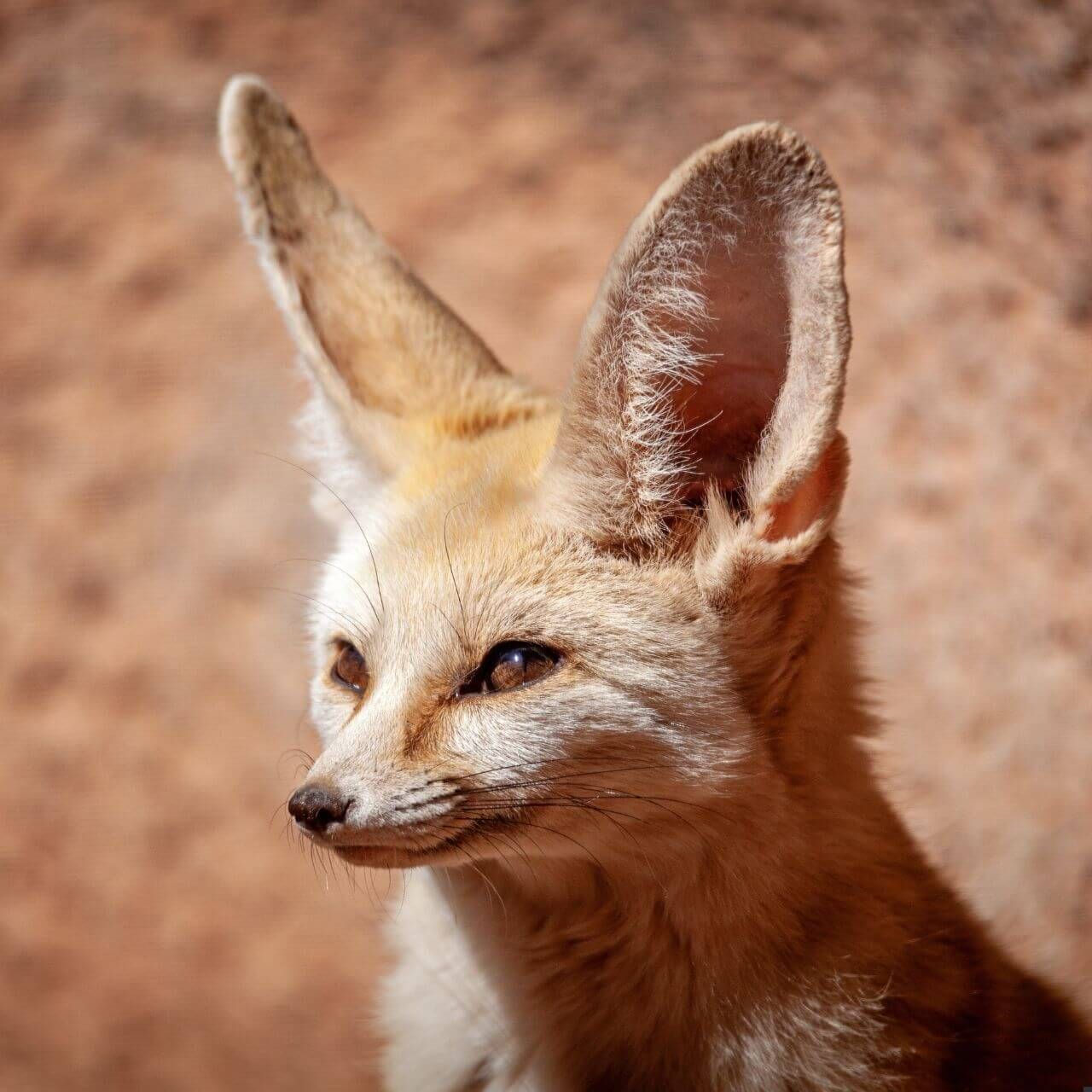
What traits do fennec foxes have?
Fennec foxes have many adaptations that help them survive in hot, dry ecosystems, such as...
- Tan, well-camouflaged fur.
- Large ears that allow heat to escape.
- Fur on their paw pads to protect their feet from hot sand.
- Extensive burrows to avoid hot daytime temperatures.
How many fennec foxes are there?
Fortuanltey, fennec foxes are classified as "least concern" by the IUCN, meaning they are not threatened with extinction.
However, they do face threats, such as collection for the exotic pet trade, climate change, and habitat loss.
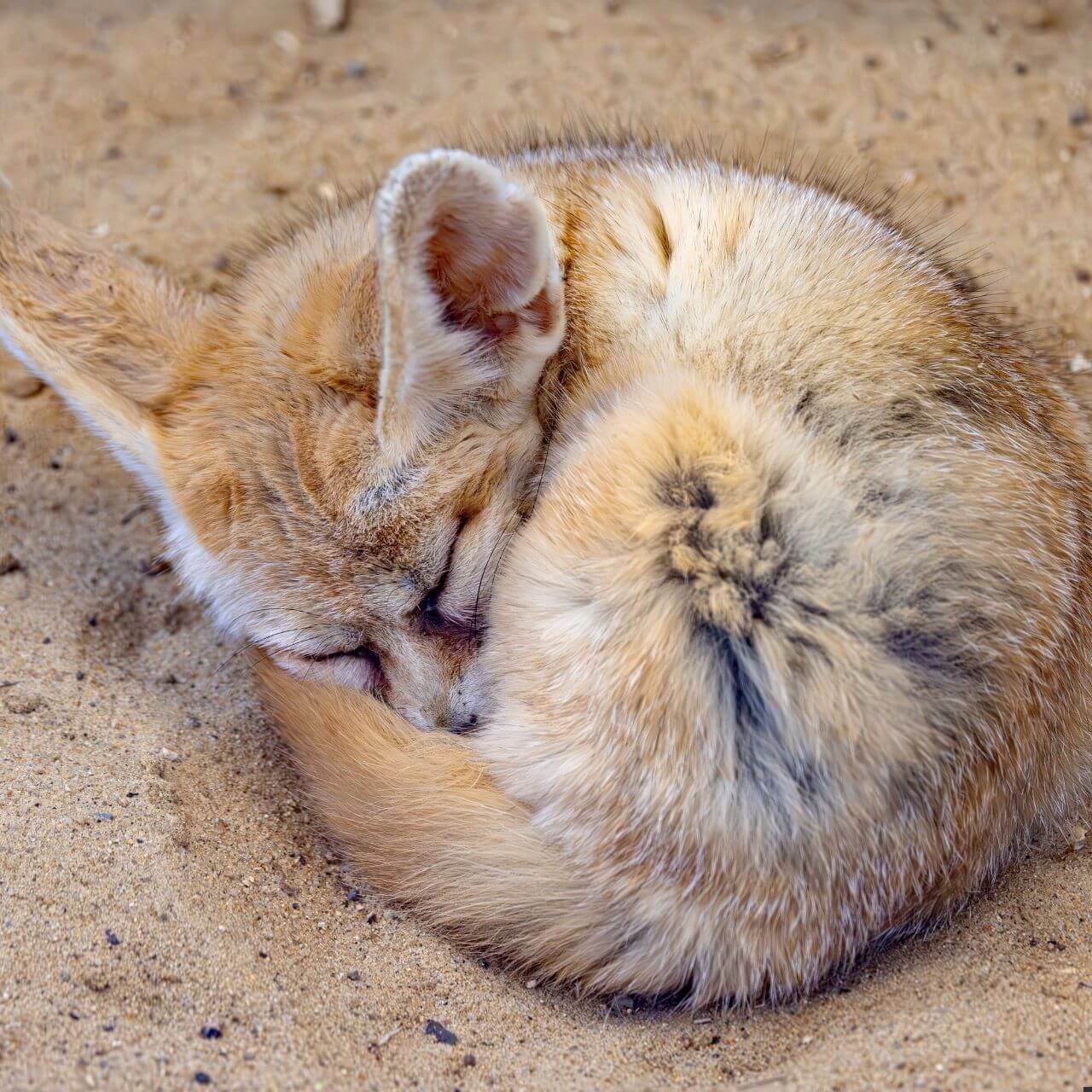
Species Spotlight
Fennec Fox Vs. Arctic Foxes
Fennec foxes are one of twelve species of foxes. They are closely related, so they have many traits in common. For example, most foxes are small omnivores.
However, foxes often develop different traits when they live in different ecosystems. Let’s compare two foxes that live in extreme environments, the fennec fox and the Arctic fox. Fennec foxes live in hot, dry deserts in northern Africa. Arctic foxes live in freezing tundras and boreal forests of North America, Europe, and Asia. Let’s look at two of their main differences.
Ears
Heat easily escapes an animal’s body through its ears. Compared to their body size, fennec foxes have the largest ears of any fox. This allows lots of heat to escape and keeps fennec foxes cool in hot deserts. Arctic foxes have much smaller ears. This allows less heat to escape and keeps Arctic foxes warm in cold tundras.
Fur
Animals often have different colored fur based on where they live. Fennec foxes have light-colored, tan fur, which camouflages well with the brown, sandy desert. Their light-colored fur also reflects sunlight, helping them to stay cool. Arctic foxes change color with the season. Their dark, brown-gray summer fur changes to a thick, white fur in the winter. In the summer, they camouflage with dirt and rocks and stay warm by absorbing sunlight. In the winter, their thick fur keeps them warm and camouflages them with the bright snow.
Because of these adaptations, a fennec fox would struggle to survive in the tundra, and an Arctic fox would struggle to survive in the desert.
BRAIN BLAST
What other animals have unique adaptations to survive in extreme habitats?
Conservation Corner
Fennec Foxes Should Not Be Pets
It is easy to see a photo of adorable fennec foxes, playful squirrel monkeys, or cuddly chinchillas on the internet and think, “Oh, I want one!” However, it becomes more dangerous for these wild animals with every view, like, and share these photos get. Most exotic (wild) animals do not make good pets. Yet, millions of people around the world have them. Thousands of animals are trapped and removed from the wild each year to meet the growing demand for exotic pets.
One of the greatest threats fennec foxes face is illegal trapping. Local people catch wild fennec foxes and their pups to sell. In many African countries, it is illegal to capture or sell fennec foxes. Yet, it still commonly occurs. Many countries have no laws to stop the sale of fennec foxes or other exotic species. In the United States, some states have laws preventing the ownership of fennec foxes, while it is completely legal in others.
It is very challenging to track how many fennec foxes are captured or sold. Scientists struggled to determine the impact of the exotic pet trade on their population size. Fortunately, fennec foxes are not threatened with extinction, but they still need our protection. You can help protect fennec foxes and other exotic animals by not liking or sharing posts of exotic pets or unethical interactions with wild animals.
Learn More!
Glossary
Adaptation
The process by which a species becomes more fit for its environment over the course of several generations. It is a result of natural selection.
Ambush
Sneak attack.
Camouflage
A process used in wildlife conservation where an animal's offspring is raised by different parents.
Canine
Referring to a member of the dog family.
Conservation
The act of preserving the environment.
Desert
Ecosystems that receive very little rainfall, usually no more than 20-inches per year and sometimes, much less. Not all deserts are hot.
Endangered
An organism that is threatened with extinction.
Exotic Pet Trade
The buys and selling of wild animals to be kept as pets.
Habitat Loss
Occurs when habitats are destroyed and changed into human-managed land such as cropland, towns, or dams.
Monogamous
Having one mate per breeding season.
Nocturnal
To be most active at night-time.
Omnivore
An animal that eats both plants and animals.
Pant
To breathe with short, quick breaths, often to cool down.
Predator
An animal that hunts other animals for food.
Prey
An animal that is hunted and eaten by another animal.
Species
A closely related group of animals with similar characteristics that are capable of reproducing (example: there is 1 species of gray wolf).
Thermoregulate
The process of an animal controlling its body temperature through physical adaptations or behaviors.

